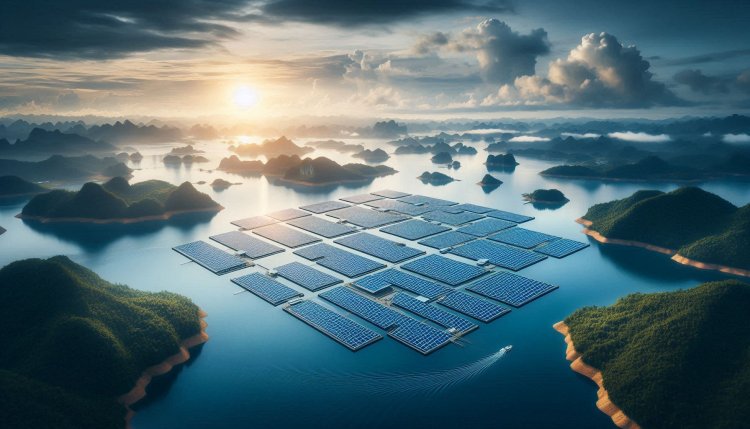Floating Solar Farms
Discover the future of sustainable energy with floating solar farms. Learn how this innovative technology is revolutionizing renewable power generation.

Floating Solar Farms
Floating solar farms, also known as floating photovoltaic (FPV) systems or floating solar panels, are an innovative way to harness solar energy by installing solar panels on bodies of water. These floating solar arrays are becoming increasingly popular around the world as a sustainable solution for generating clean energy.
Benefits of Floating Solar Farms
There are several advantages to deploying floating solar farms:
- Optimal Use of Space: Floating solar farms can be installed on bodies of water that are not being used for other purposes, such as reservoirs, lakes, and ponds. This allows for the efficient use of space and does not compete with land resources that may be needed for agriculture or other developments.
- Increased Efficiency: The cooling effect of the water helps to improve the efficiency of solar panels, as they operate more effectively in cooler conditions. This can lead to higher energy production compared to traditional land-based solar installations.
- Reduced Water Evaporation: By covering a portion of the water surface with solar panels, floating solar farms can help reduce water evaporation in reservoirs and other bodies of water. This can be particularly beneficial in regions facing water scarcity or drought conditions.
- Environmental Benefits: Floating solar farms have minimal environmental impact and can help to reduce greenhouse gas emissions by generating clean, renewable energy. They also provide additional benefits such as shading the water, which can help to inhibit algae growth and improve water quality.
- Scalability: Floating solar farms can be easily scaled up or down depending on energy needs. They can be deployed in various sizes, from small installations for local communities to large-scale projects that can power cities or industrial facilities.
Challenges and Considerations
While floating solar farms offer many benefits, there are also challenges and considerations that need to be addressed:
- Installation and Maintenance: Installing and maintaining floating solar arrays can be more complex and costly compared to traditional land-based systems. Specialized equipment and expertise are required for installation, as well as regular maintenance to ensure the longevity and efficiency of the system.
- Water Quality and Ecosystem Impacts: Careful consideration must be given to the potential impacts of floating solar farms on water quality and ecosystems. Proper environmental assessments and monitoring are essential to minimize any negative effects on aquatic life and habitats.
- Weather and Climate Considerations: Floating solar farms are exposed to the elements, including wind, waves, and storms. Designing the system to withstand these conditions is crucial to ensure its long-term viability and performance.
- Regulatory and Permitting Challenges: There may be regulatory hurdles and permitting requirements that need to be navigated when deploying floating solar farms. Working closely with local authorities and stakeholders is essential to ensure compliance with regulations and obtain necessary approvals.
Global Adoption of Floating Solar Farms
Floating solar farms are gaining popularity around the world, with countries embracing this innovative technology to meet their renewable energy goals. Some of the key regions leading the way in floating solar deployment include:
- Asia: Countries in Asia, such as Japan, China, and South Korea, have been at the forefront of floating solar development. These nations have large bodies of water, including reservoirs and lakes, making them ideal locations for floating solar installations.
- Europe: European countries like the Netherlands and France have also been investing in floating solar farms as part of their renewable energy strategies. The Netherlands, in particular, has implemented several floating solar projects on its water bodies.
- North America: The United States and Canada are seeing an increase in floating solar projects, especially in regions with abundant water resources. These projects are helping to diversify the energy mix and reduce carbon emissions.
- Rest of the World: Floating solar farms are also being implemented in other regions, including Australia, Brazil, and India. These countries are recognizing the benefits of floating solar as a clean and sustainable energy solution.
What's Your Reaction?

















